6 Furnace Issue Warning Signs to Watch Out For
Posted on by WestAIR Heating & Cooling
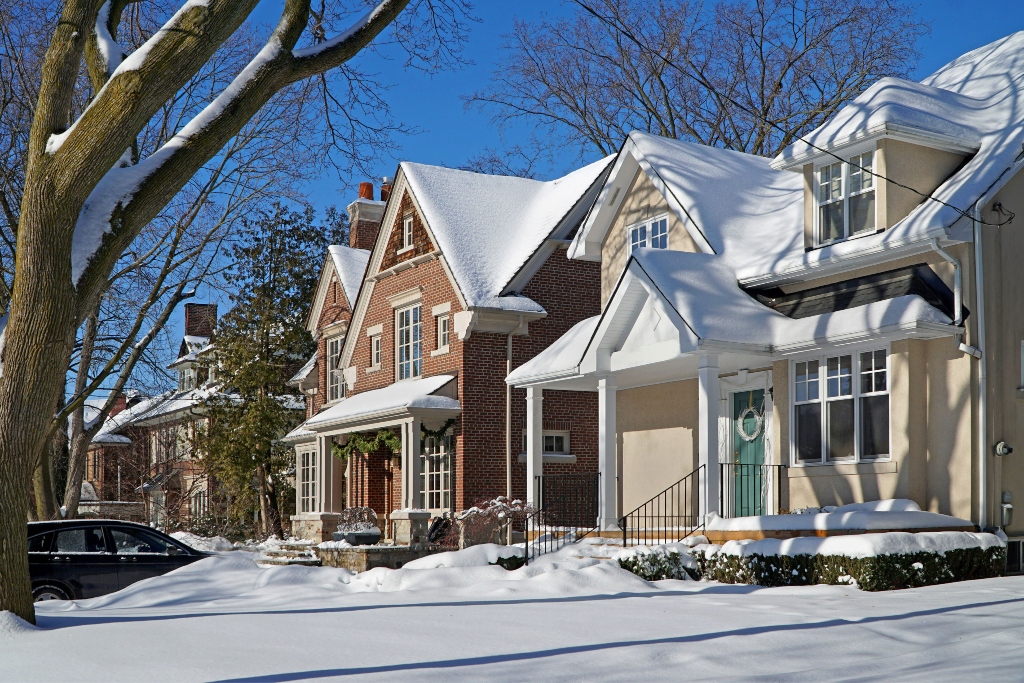
November may have given us a few warm, sunny days, but it’s safe to say heating season is upon us in Minnesota. We’ll have our furnaces working hard for the next few months, making it crucial for homeowners to know when their system needs professional repair or replacement. Use these furnace issue warning signs so you know when it’s time to call in the pros this winter.
Old Age
With proper installation and regular maintenance service, furnaces will last 15 to 20 years on average. Check the age of your furnace, and if it’s over 15 years old, it’s time to start considering an upgrade. Contact WestAIR for a free estimate and to schedule a professional inspection and evaluation with one of our HVAC technicians.
Frequent, Costly Repairs
Your furnace should be serviced annually for maintenance, but regular repairs that take a toll on your wallet are a sure sign that your furnace needs replacing. If repair service costs 50 percent or more than a replacement, a system upgrade is highly recommended. Not only will you receive peace of mind throughout the heating season, modern furnaces offer much higher efficiency and performance, saving you money on utility and repair bills.
Irregular Sounds, Smells, and Cycling
HVAC systems operate quietly and can easily go unnoticed if they’re functioning properly. Keep an eye (as well as an ear and nose) out for these irregular warning signs:
- Banging, rattling, popping, humming, or screeching sounds
- Persistent or random burning smells
- More frequent on/off cycling (AKA short cycling)
These complications indicate serious mechanical problems that decrease heating efficiency and pose a potential fire hazard. Contact WestAIR, your local HVAC company, ASAP if you notice any of these issues.
Uneven or Inefficient Heating
Properly sized, installed, and maintained furnaces are designed to heat your entire house evenly. Signs of inefficient heating include:
- Finding cold spots or different temperatures in rooms around the home
- Having to adjust the thermostat frequently to maintain comfort
- Turning the temperature higher than normal to keep the house warm
- Seeing unexpected spikes in utility bills
If you experience any of these issues, the solution could be anything from a simple repair to a thermostat or furnace replacement. Don’t suffer through poor heating and higher costs – have an HVAC technician inspect your system and diagnose the problem and discuss your options.
Decreased Indoor Air Quality
Furnaces and HVAC systems are designed to help maintain indoor air quality and humidity as well as temperature. Yours might be failing if you or your family notice the following:
- Stuffy or stale air
- Dry nose, throat, or skin
- Excessive dust accumulation
- Frequent static shocks
- Cracked wood on furniture, fixtures, and frames
- New or worsening allergy symptoms
Carbon Monoxide Exposure
Furnaces fueled by gas or oil produce carbon monoxide, which is poisonous and potentially life-threatening with prolonged exposure. Heating systems are designed to trap and safely exhaust this dangerous gas, but it is possible for a leak to develop over time and put your family at risk. Signs of a carbon monoxide leak include:
- Yellow and/or flickering burner flame (should be blue with a consistent burn)
- Soot around the furnace and registers
- Excess moisture on exterior windows, walls, and other cold surfaces
- Rust, cracks, or corrosion on/around flue pipes and other furnace components
Warning signs of carbon monoxide exposure can also mimic common illnesses, so beware of unexplained nausea, frequent headaches, confusion/disorientation, burning nose and eyes, and flu-like symptoms. Remember, carbon monoxide poisoning can cause serious health issues and even death. If you or a family member experience any of these signs and symptoms, seek medical attention immediately and then call your utility provider and HVAC technician ASAP.
We all know that Minnesota weather offers plenty of surprises, and getting stuck with a broken furnace is a surprise we could all do without. Remember these furnace issue warning signs so you can stay ahead of issues and know when it’s time for professional repair or replacement service.
WestAIR is a Rheem Pro Partner and proudly services all residential HVAC brands. Contact us for all your heating and cooling needs.
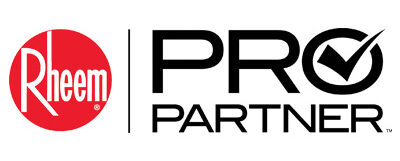
This entry was posted in Furnace,Health Tips,Heating,Repairs,Tips,Winter and tagged Furnace, Furnace Issue Warning Signs, Furnace Issues, Furnace Repair, Furnace replacement, Furnace Upgrade, Furnace Warning Signs, Heating, Heating Season, Heating System, High-Efficiency Furnace, Home Heating, Home Heating Safety, HVAC Safety, HVAC Warning Signs, Replace furnace, Residential Furnace, Residential HVAC, Rheem, Rheem Furnaces, Rheem Pro Partner, WestAIR furnace replacement
7 Tips for Winter Indoor Air Quality Maintenance
Posted on by WestAIR Heating & Cooling
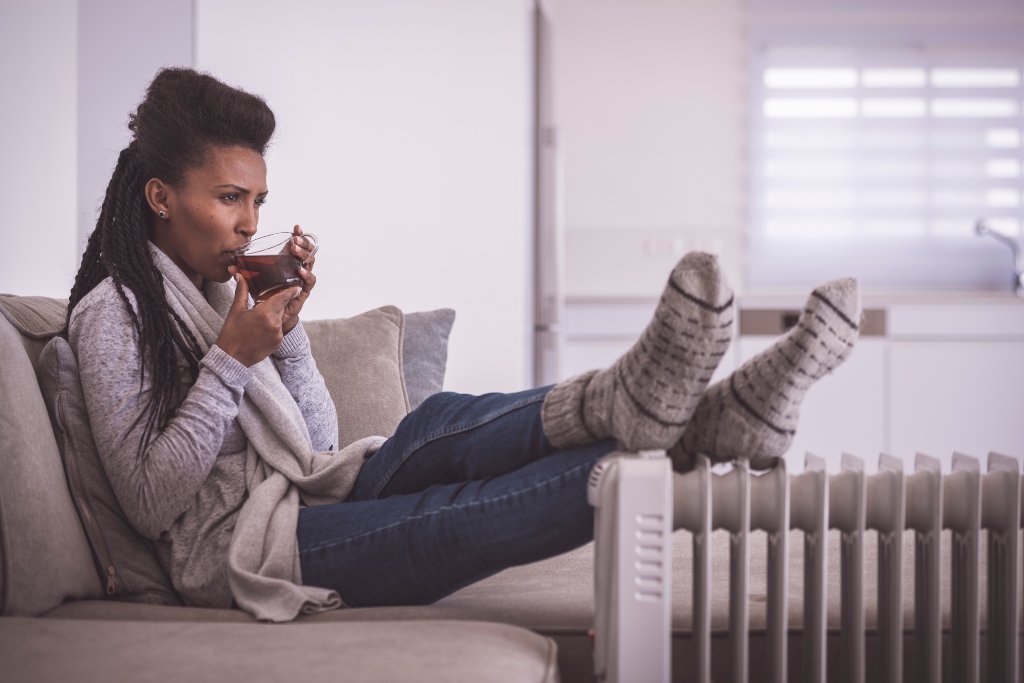
With the recent snowfall and chilly temps, there’s no denying that winter is almost here. Time to prepare! As heating season makes its way to Minnesota, we must remember to keep the air in our home clean as well as warm. Use this guide to winter indoor air quality maintenance to keep your family cozy, healthy, and happy throughout the season.
Poor Winter Indoor Air Quality: Causes and Effects
When cold weather hits, we seal our homes to prevent the warm air produced by our furnaces from escaping. While this helps increase comfort and energy efficiency, it also traps dust, pollen, and other airborne contaminants inside the home that then decrease indoor air quality. Common signs of poor winter indoor air quality include:
- Dry, itchy, or watery eyes
- Cold or flu symptoms: coughing, sneezing, nausea
- Heightened symptoms of asthma and other respiratory illness
- Fatigue and trouble concentrating
- Irritation of the nose and throat, particularly dryness
- Headaches
Tips for Winter Indoor Air Quality Maintenance
Escaping the bitter cold of Minnesota winters means spending more time inside our home, making clean indoor air crucial to our comfort and health. Thankfully, homeowners can improve and maintain air quality with these helpful tips.
- Clean regularly – Don’t let dust, mold spores, and other pollutants build up around the home. Dust hard surfaces and vacuum (using a vacuum with a HEPA filter if possible) at least weekly. Use non-toxic cleaners free of volatile organic compounds (VOCs), which are a major contributor to unhealthy air.
- Maintain a clean filter – Air filters keep dust and other debris from entering and harming your HVAC system, but must be maintained in order to prevent these irritants from making their way back into the air. Remember to change air filters monthly or clean if resuable.
- Schedule annual service maintenance – Ensure your heating system runs at peak performance and provides clean, warm air with professional maintenance service from a WestAIR HVAC expert.
- Have your ductwork cleaned – Dirt, dust, pet hair and dander, and other irritants settle inside your air ducts over time. Schedule duct cleaning service before winter is in full swing, and plan to do so annually.
- Enhance ventilation with an air exchanger – Sealing the home in winter leads to recycled, stale air inside. To resolve this, air exchangers deliver a continuous flow of fresh, filtered outdoor air while simultaneously exhausting unhealthy indoor air.
- Control humidity with a whole house humidifier – Humidity plays a crucial role for indoor air quality. Dry winter air can cause nose, throat, and skin discomfort, as well as damage wood fixtures and furniture over time. Installing a whole house humidifier will help maintain proper humidity levels in your home.
- Consider additional clean air solutions – Air cleaners work with your current system to remove excess dust and other irritants that decrease indoor air quality. Ultraviolet (UV) light purification systems utilize UV rays to eliminate odors harmful airborne pathogens like viruses, bacteria, mold, and VOCs.
This year has presented us all with new and unique challenges. But no matter how unpredictable 2020 has been, we know we can always plan for harsh winter weather here in Minnesota. We’re already seeing the temps drop and snow fall, so don’t wait! Use these winter indoor air quality maintenance tips to enjoy clean, comfy air inside your home this heating season.
For all your heating and cooling needs, trust the HVAC experts at WestAIR. Contact us today to learn more.
This entry was posted in Duct Cleaning,Furnace,Health Tips,Heating,Humidifier,Humidity,HVAC Maintenance,Indoor Air Quality,Tips,Winter and tagged Air cleaner, Air exchanger, Duct cleaning, Duct cleaning service, Heating, Heating Tips, Humidfier, Humidity, Humidity Management, HVAC tips, Indoor air quality, Indoor air quality solutions, Professional duct cleaning, Residential HVAC, Ventilation, WestAIR Heating & Cooling, Winter, Winter HVAC, Winter HVAC Tips, Winter Indoor Air Quality, Winter Indoor Air Quality Maintenance, Winter Tips, Winterize
Understanding and Controlling Indoor Humidity
Posted on by WestAIR Heating & Cooling

The hottest time of year is upon us, and we all know how uncomfortable Minnesota’s humidity can be. Our home should be a cool, comfy escape on hot summer days. To help, we put together this guide to understanding and controlling indoor humidity.
Understanding the Basics: Humidity Vs. Relative Humidity
Simply put, humidity measures the amount of water vapor in the air. However, since warm air can retain more moisture than cold air, we look at relative humidity (RH): the amount of water vapor present relative to the total amount the air can hold at the given temperature. RH illustrates how the air actually feels and affects our comfort. The ideal RH for a home is typically between 40 and 60 percent.
Methods for Controlling Indoor Humidity
Essentially, high levels of indoor RH occur when excess moisture enters the home but can’t escape. Use these tips for controlling indoor humidity and keep your home cool and cozy this summer.
Run Your Air Conditioner
By replacing warm air with cooler air, A/C systems naturally reduce indoor humidity. Again, cool air retains less moisture, so running your air conditioner helps decrease RH in the home.
Don’t Introduce Extra Moisture to the Air
More moisture means more humidity. Certain everyday activities naturally release moisture in the air and should be altered to control RH:
- Avoid meals that require boiling water, or at least cover the pot whenever possible. Use the kitchen exhaust fan when cooking.
- Take colder, shorter showers to avoid the steam of hot water, and run your exhaust fan during and for 5 to 10 minutes afterwards.
- Hang laundry outside to dry so the evaporated moisture doesn’t get trapped in the home.
Provide Proper Ventilation & Exhaust
Remember, higher humidity happens when moisture can’t escape, so make sure that it can:
- On nice days, open up the windows to let stale, humid air out and fresh air in.
- Change or clean your HVAC system’s filter monthly for optimal cooling and ventilation.
- Ensure laundry, kitchen, and bathroom exhaust fans are clear of dust and debris.
- Schedule an A/C tune-up with your local HVAC specialist to ensure your system runs at peak performance.
Fix Plumbing Leaks
Leaky pipes and fixtures can damage your home and also add moisture to the air, so get them fixed ASAP. Warning signs include water stains on ceilings or walls, wet spots, and irregularly high water bills. You can also wrap exposed pipes with insulators to prevent condensation.
Seal Leaks in Ductwork
Well designed, properly installed ductwork distributes air evenly throughout the home. Leaks create a pressure imbalance and can let humid air in or cold air out. Have your ducts professionally cleaned and inspected to make sure your system circulates air properly.
HVAC Solutions
Humidity can crack or warp wood, promote rot in the home’s structure over time, and increase accumulation of dust and other irritants to asthma and allergy sufferers. Luckily, there are supplemental HVAC solutions to consider if indoor humidity is a big concern:
- Whole house dehumidifiers work in conjunction with your HVAC system to remove excess moisture.
- Portable dehumidifiers can be placed in bathrooms, basements, and other specific locations known to house extra moisture.
- Air exchangers exhaust excess humidity and stale indoor air and deliver filtered outdoor air inside simultaneously.
As we use our homes as a welcome escape from the heat, clean and cool air becomes a must. Use this guide to controlling indoor humidity to keep your family comfy throughout the dog days of summer. And remember to rely on the residential HVAC experts for all your air conditioning and indoor air quality needs.
Contact us today to schedule service and learn more.
This entry was posted in AC,Air Conditioning,Cooling,Duct Cleaning,Health Tips,Indoor Air Quality,Tips and tagged air conditioning, Air filters, Controlling Indoor Humidity, Cooling Mistakes, Cooling Season, Cooling Tips, Duct cleaning, Family Health, Home Cooling, Homeowner Education, Homeowner Tips, Humidity, HVAC Education, HVAC Safety, HVAC tips, Indoor air quality, Indoor humidity, Preventative Maintenance, Summer Cooling, Summer HVAC Tips, Understanding Humidity
Tips for Controlling Spring Allergies at Home
Posted on by WestAIR Heating & Cooling

Seeing warmer weather and longer days is bittersweet for allergy sufferers. Spring may be in the air, but so are pesky allergens. As we spend more time in our homes during the COVID-19 pandemic, indoor air quality becomes more important than ever. Use these helpful tips for controlling spring allergies at home to stay healthy and comfortable.
Change Shoes and Clothing After Being Outdoors
Controlling allergies begins with limiting exposure to allergens. Limit your time outdoors whenever possible. If you do venture out, don’t wear the same clothing and shoes around your home. Dirt, dust, pollen, and other irritants can cling to you and your wardrobe. Avoid tracking them around by changing as soon as you return home.
Dust, Vacuum, and Mop Regularly
Dust and allergens will settle on the surfaces of your home. Try to clean them at least weekly, and more often if you are leaving windows and doors open.
Have Your Ductwork Cleaned
Air ducts transport fresh air between your home and HVAC system, and over time will collect dust, pollen, and other airborne particles that travel through them. Having them cleaned annually is vital to indoor air quality. Schedule a professional duct cleaning service to help ensure you’re ready for the season.
Maintain a Clean Air Filter
The air filter blocks airborne irritants from getting into your system. However, it becomes dirty and less effective over time. If left long enough, the filter can also become clogged and make your system work harder, causing higher bills and faster wear and tear. Change (or clean it if re-usable) your air filter monthly to keep the system running properly.
Install an Air Cleaner
The name says it all. An air cleaner uses a filter to trap up to 97 percent of airborne bacteria, mold, dander, and other pollen-sized irritants. It can also eliminate viruses, kill germs, and neutralize odors and fumes.
Invest in Ultraviolet (UV) Light Air Purification
Breaking through an organism’s cell wall to destroy its DNA, UV light rays prevent that organism from reproducing and causing illness. UV technology has been around for over 100 years, and many homeowners today utilize it as a highly effective way to kill harmful bacteria, mold, and viruses in the home.
These systems conveniently work in conjunction with your current HVAC system. WestAIR is an authorized dealer of BreatheCLEAN UV air purification systems. Contact us to learn more or to schedule your UV light system installation.
Consider an Air Exchanger
Letting fresh air into the home can be beneficial, but it brings allergens along with it. An air exchanger solves this by exhausting stale indoor air and excess humidity while also delivering a continuous flow of filtered outdoor air inside. Installing a programmable thermostat will help you maintain indoor comfort without constantly managing temperature. And again, remember to keep your filter clean!
Controlling spring allergies at home comes down to limiting exposure to allergens. It sounds simple, but don’t be fooled into thinking the home is a completely irritant-free safe space. While we may be spending less time outdoors than usual this spring, use these tips to maintain indoor air quality and keep allergy symptoms at bay.
WestAIR’s HVAC experts are here for all your heating and cooling needs. As we continue helping our customers prepare their homes for the spring and summer during this time, our team is taking extra precautions to protect the health and safety of themselves and everyone they service. We prioritize your comfort and satisfaction in all that we do. Contact us today to schedule service and learn more.
This entry was posted in AC,Air Conditioning,Cooling,Duct Cleaning,Health Tips,Indoor Air Quality,Spring,Tips and tagged Air cleaner, air conditioning, Air exchanger, Air filters, Family Health, Family Safety, Heating, Home Heating, Home Safety, Homeowner Education, Homeowner Tips, HVAC Safety, HVAC tips, Importance of Indoor Air Quality, Indoor air quality, Spring Allergies, Spring Cleaning, Spring Heating and Cooling, UV Light
HVAC Tips for Spring Cleaning
Posted on by WestAIR Heating & Cooling

We can finally see that spring is on its way! With the weather warming up, it’s time to start preparing the home for the cooling season. Will yours be ready? To help out, we put together a list of HVAC tips for spring cleaning.
Change Air Filter (or Clean if Re-Usable)
A dirty or clogged air filter makes your system work harder, leading to higher bills and increased wear and tear. It also negatively affects indoor air quality. Change your air filter (or clean it if re-usable), and plan to do so monthly to keep the system working properly.
Clean Floor Registers and Return Air Vents
If dust gets into your HVAC system, it can negatively impact both energy efficiency and your home’s air quality. Use a vacuum to clean your floor registers and return air vents. You can get a deeper clean by removing the vent, brushing the individual grill spaces with a rag and butter knife, and then rinsing with warm soapy water.
Dust and Mop Around the Home
Though you should do these chores regularly throughout the year, dusting and mopping are especially important during spring. With windows and doors being left open more often, airborne particles like dust, dirt, and allergens accumulate on your surfaces and eventually make their way into your HVAC system.
Have Your Ductwork Cleaned
Air ducts supply your HVAC system with fresh air, but they can quickly become dirty from all the dust, pollen, and other harmful particles floating in the air. Keeping them clean helps prevent these harmful pollutants from accumulating in your ductwork and impacting the health of your HVAC system and air quality. Spring cleaning is the perfect time for a professional duct cleaning service, which you should do annually.
Clean Bathroom Exhaust Fan(s)
Clean and properly functioning, bathroom exhaust fans help with odor and moisture control, which helps prevent mold and mildew. Be sure the power is off, wash it with soapy water, and clean dirt and debris off the fan blades with a toothbrush.
Clean and Clear Debris from Outdoor A/C Unit
If your outdoor unit doesn’t get enough air or has dirt-covered coils, it could overheat. Turn off the power and clear away plants, weeds, leaves, branches, etc., and then rinse the condenser coils with a garden hose.
Check/Change Batteries in Smoke/Carbon Monoxide Detectors
Smoke and carbon monoxide detectors are a crucial line of defense against two common household dangers. Check the batteries and replace them if necessary. You should also dust or vacuum them to optimize performance.
Schedule Preventative Maintenance
Don’t get caught with a failing A/C or expensive repair bill down the road. Schedule a preventative maintenance service with your local HVAC contractor to ensure your system is running smoothly and ready for the cooling season.
During Minnesota winters, at times it feels like spring will never come. But when the days get longer and the temps rise, we know it’s time to start getting ready. Use these HVAC tips for spring cleaning to help make sure your home is ready for a safe, comfortable, and happy cooling season.
The HVAC professionals at WestAIR offer experience and expertise to cover all your heating and cooling needs. Contact us today to schedule service and learn more.
This entry was posted in AC,Air Conditioning,Cooling,Duct Cleaning,Health Tips,Indoor Air Quality,Spring,Tips and tagged air conditioning, Duct cleaning, Duct cleaning service, Family Health, Family Safety, Heating, Home Heating, Home Safety, Homeowner Education, Homeowner Tips, HVAC Safety, HVAC tips, Importance of Indoor Air Quality, Indoor air quality, Professional duct cleaning, Spring Cleaning, Spring Heating and Cooling
Importance of Indoor Air Quality
Posted on by WestAIR Heating & Cooling
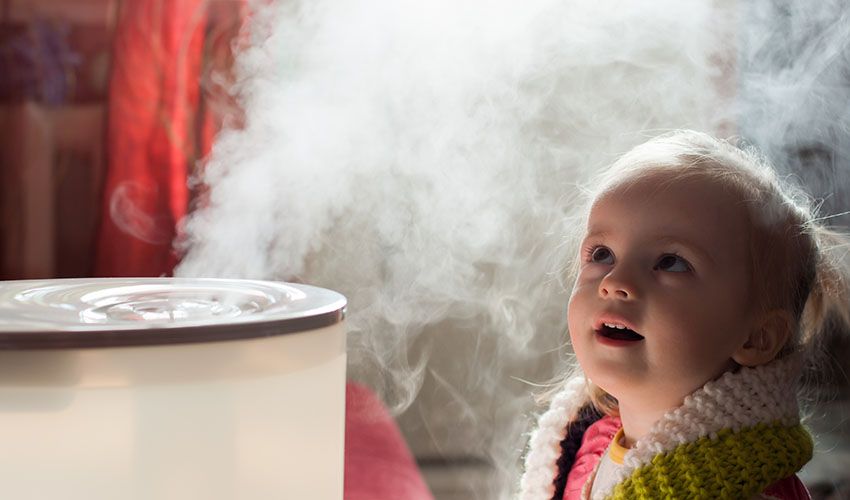
When we think about pollutants, many of us jump to an image of factories pumping smoke and toxins into the air. But what about on a smaller, more personal scale? Most of us spend more time in our own home than anywhere else, yet fail to consider the potential harm we face there. Let’s look at the importance of indoor air quality for family health.
Why Indoor Air Quality Matters
According to the EPA, the concentrations of pollutants in indoors are often two to three times what they typically are outdoors. Additionally, the EPA says that on average, Americans spend about 90 percent of their time indoors, with people who are more susceptible to pollution’s adverse effects (including children, older adults, and those with cardiovascular or respiratory disease) spending even more.
Causes/Sources
When it comes to indoor pollutants, most people are aware of secondhand smoke, radon, and carbon monoxide. Other threats to indoor air quality include:
- Combustion sources like wood, coal, and gas heating and cooking appliances
- Cleaning supplies releasing different chemicals into the air
- Building materials like insulation and pressed wood
- HVAC systems, especially if improperly maintained
- Pet hair, dander, and other allergens
- Inadequate ventilation
- Dust mites and pests
- Mold and bacteria
Outdoor air pollutants can also make their way inside the home through open doors and windows, ventilation systems, and cracks and seams. Chimney smoke can reenter and pollute the air, and volatile chemicals can sometimes enter via the water supply when cooking or showering. By simply entering the home, people inadvertently bring the soil and dust particles attached to their clothing along with them, as well as any pollutants attached to those particles.
Effects
The effects of indoor air pollutants vary both by person and based on length of exposure. Some immediate, short-term effects include:
- Irritation of the eyes, nose, and throat
- Coughing and sneezing
- Headaches, dizziness, and fatigue
- Upper respiratory congestion
- Triggered or worsening asthma symptoms, including asthma attacks
Long-term and more severe health effects include:
- Respiratory disease, heart disease, and cancer
- Nausea and vomiting
- Fever and chills
- Myalgia (muscle pain)
- Nose bleeds
- Difficult or painful breathing
If you experience any of these symptoms, contact your healthcare professional or dial 9-1-1 in case of emergency. Consult your local HVAC professional about improving your home’s air quality.
Tips
Whether we’re escaping hot and humid summer days or the bitter cold of winter, Minnesota residents spend plenty of time indoors year-round. Maintaining clean indoor air is crucial, and here are a few basic tips to get you started:
- Let in fresh air: Open windows and doors when possible and consider purchasing an air exchanger to help replace stale indoor air with during the winter.
- Clean regularly: Vacuum carpets and rugs one to two times each week and dust hard surfaces weekly.
- Wash bedding weekly and consider using dust mite-proof covers on pillows, mattresses, and box springs.
- Have your ductwork cleaned and change your filter (or clean if re-usable) monthly.
- Invest in an air cleaner to efficiently trap and remove airborne pollutants.
- Declutter your living space to avoid trapping and holding dust.
WestAIR Heating & Cooling understands the importance of indoor air quality, and we want to help keep your family safe and healthy. We offer professional duct cleaning as well as sale and service of air exchangers, air cleaners, whole house humidifiers, and replacement filters.Contact us to learn more and schedule service today.
This entry was posted in Duct Cleaning,Health Tips,Indoor Air Quality,Tips and tagged Effects of Indoor Air Pollutants, Effects of Indoor Air Quality, Effects of Poor Indoor Air Quality, Family Health, Family Safety, Heating, Heating System, Home Heating, Home Safety, Homeowner Education, Homeowner Tips, HVAC Safety, Importance of Indoor Air Quality, Indoor air, Indoor Air Pollutants, Indoor air quality, Indoor air quality solutions, Indoor Air Quality Tips, Winter
Surprising Ways to Reduce Humidity in Your Home
Posted on by WestAIR Heating & Cooling
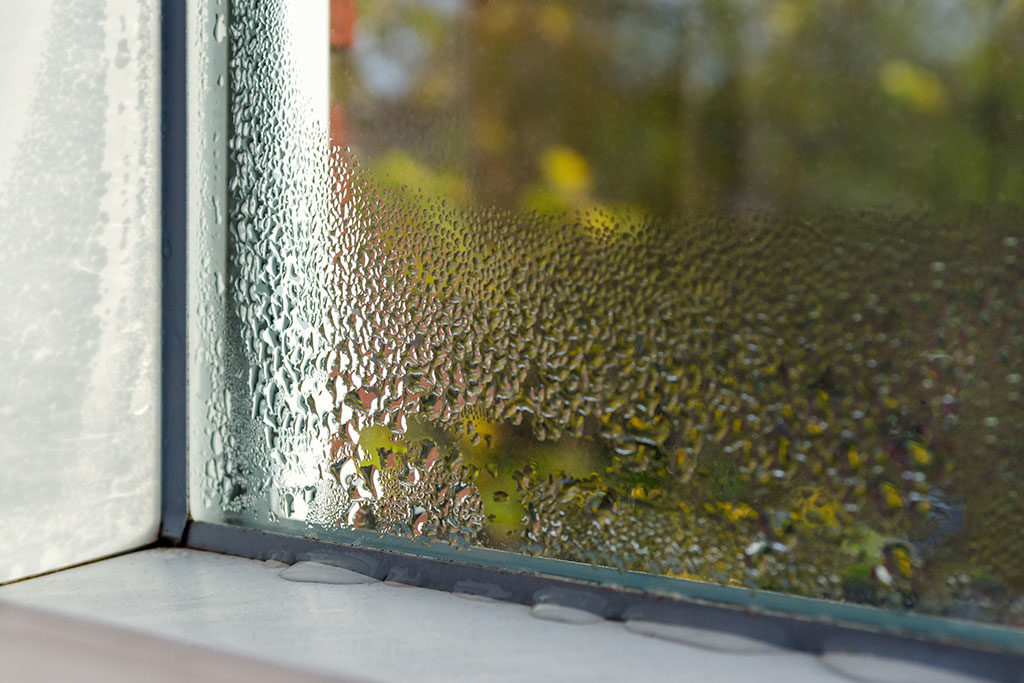
If you’ve been noticing foggy windows, musty odors, or clammy air throughout your home, chances are, your humidity levels are high. Humidity can both rob you of comfort and threaten your health. We don’t want you to suffer through the stifling heat, so we’ve outlined some surprising ways to reduce humidity in your home.
But first, a word about relative humidity (RH): RH measures water vapor relative to the temperature of the air. RH illustrates the amount of water in the air in relation to the total amount of humidity that could be held at the current temperature. Weather forecasts report relative humidity because it affects how we feel the temperature. Humid air feels warmer; dry air feels cooler. The ideal indoor relative humidity for a home is between 40 and 60 percent. If your RH is lower or higher, follow these tips:
Go old school with laundry
Dry your clothing outside. If you hang wet clothing inside to dry, all the moisture will evaporate into the air.
Accessorize with plants
Invest in some household tropical plants like Boston ferns, English ivies, Peace lilies, Reed Palms, or Tillandsias. These plants absorb moisture from the air instead of through the roots.
Take cold(er) showers
Hot showers create steam. Plan to bathe after exercising or spending time outside in the heat. You’ll be less tempted to jump into a steaming shower, and the cool water will feel refreshing. If nothing else, run the exhaust fan during and after showering.
Eat more salads
Hot weather provides the perfect opportunity to cook outside on the grill or eat cold meals like salads and sandwiches. Avoid boiling water; instead, save the heavy pasta for cooler weather. Your body will thank you in more ways than one.
Check the drainage route
In high humidity, your air conditioner or dehumidifier will produce a lot of condensation that has to go somewhere. Regularly empty the drip pan and be sure the drain lines are working properly so the water doesn’t evaporate back into the air.
Replace your flooring
Carpet is known to retain moisture. If you’ve tried all the above methods to decrease humidity, but still have a problem with moisture, consider replacing the carpet with hardwood flooring.
Benefits of proper humidity
With lower humidity levels, you could raise the thermostat setting a few degrees and still be comfortable. High humidity may cause headaches and asthma symptoms such as wheezing, shortness of breath, or a chronic cough. Proper humidity levels are easier on your respiratory tract and can:
- Reduce your cooling costs.
- Minimize wear on your HVAC system.
- Prevent dust mites, mold, bacteria, and mildew.
- Eliminate foul odors.
- Help you sleep better.
If you are still having trouble, consult with the professionals at WestAIR Heating & Cooling. We offer high-efficiency air conditioners to keep you cool in the muggy season and countless air quality accessories to reduce humidity. Schedule service to have a technician visit your home and recommend the right solutions for your family’s total indoor air comfort.
Contact us for more information.
This entry was posted in Air Conditioning,Cooling,Health Tips,Indoor Air Quality,Tips and tagged Air quality accessories, Asthma, Comfortable, Cooling, Dehumidifier, Energy efficiency, Energy savings, Grilling out, Humidity, HVAC, HVAC tips, Indoor air, Indoor air quality, Indoor air quality solutions, Muggy season
How Indoor Air Quality Impacts Your Family’s Health
Posted on by WestAIR Heating & Cooling
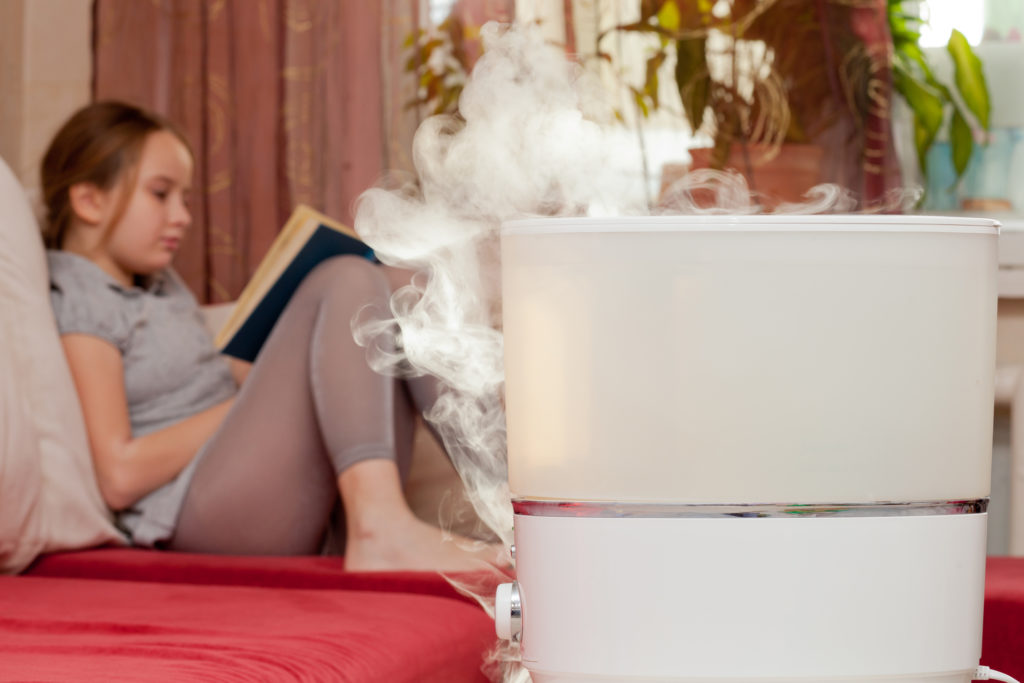 Humans inhale 11,000 to 15,000 liters of air per day. Most families spend more time in their home than anywhere else. Without proper ventilation, your indoor air could hold gases, chemicals, or other pollutants that can cause headaches, eye and skin irritation, allergies, asthma attacks, fatigue, and even cancer or long-term health complications. What’s even scarier? Ninety-eight percent of all airborne particles are below one micron (1/25,000 inch) in size and invisible to the naked eye.
Humans inhale 11,000 to 15,000 liters of air per day. Most families spend more time in their home than anywhere else. Without proper ventilation, your indoor air could hold gases, chemicals, or other pollutants that can cause headaches, eye and skin irritation, allergies, asthma attacks, fatigue, and even cancer or long-term health complications. What’s even scarier? Ninety-eight percent of all airborne particles are below one micron (1/25,000 inch) in size and invisible to the naked eye.
Imagine a toxic soup of pollutants constantly re-circulated throughout your home, through your respiratory system, and into your bloodstream.
The most obvious pollutants are secondhand smoke, radon, and carbon monoxide, but harmful airborne particles could come from any of the following:
- Gas, oil, kerosene, or wood stoves and fireplaces.
- Building materials like insulation, carpet, cabinetry, and pressed wood products.
- Personal care products and household chemicals like cleaning solutions, glues, and pastes.
- Pesticides, pollen, pet dander, hair, or other fibers.
- Dust mites, molds, and bacteria.
Children are more susceptible to all these things because their bodies are still developing. They breathe more air and eat more food in relation to their body weight than adults do. Properly maintained indoor air quality is especially important for people with asthma, allergies, chemical sensitivities, respiratory diseases, suppressed immune systems, or contact lenses. Here are some basic tips to make sure your home has clean, fresh air free of pollutants:
- Invest in a whole house humidifier or a smaller unit. The Mayo Clinic recommends you keep your home between 30 and 50 percent humidity.
- Make sure all vents are clear of obstructions and working properly.
- Have your ducts cleaned and change your furnace filter regularly (check it once a month).
- Buy a houseplant like a peace lily, dracaena, or garden mum to act as an air purifier.
- Use an exhaust fan when cooking, running the dishwasher, or bathing.
- Make sure gas stoves are well ventilated.
- Avoid smoking.
- Use craft supplies in well-vented areas.
- Minimize clutter.
- Remove carpeting if possible.
- Don’t wear outdoor shoes around the house.
- Keep the trash covered.
- Test your home for radon and use carbon monoxide detectors.
- Fix water leaks.
- Dust surfaces.
- Vacuum frequently, and open windows when you do.
- Wash bedding weekly.
- Keep a lid on scented candles when not in use.
WestAIR Heating & Cooling wants to help you live a healthier life with safe indoor air quality. We offer air exchangers, air cleaners, whole house humidifiers, replacement filters, and more to equip your HVAC system against contaminants. We also provide duct cleaning service so you can rest assured your air has clean, unobstructed passage throughout your home. Contact us to learn more.
This entry was posted in Duct Cleaning,Health Tips,Indoor Air Quality and tagged Air cleaner, Air filters, Duct cleaning, Dust, Filters, High efficiency electronic air cleaner, HVAC, Indoor air, Indoor air quality
Dry Indoor Air + Humidification
Posted on by WestAIR Heating & Cooling
 Winter is already uncomfortable enough with the freezing temperatures, so why not make the most of your cozy indoor living space where you can escape the dry and brittle cold air? Lower temperatures mean lower humidity levels because cold air can’t hold as much moisture as warm air. Here are two simple reasons your dry indoor air needs humidification:
Winter is already uncomfortable enough with the freezing temperatures, so why not make the most of your cozy indoor living space where you can escape the dry and brittle cold air? Lower temperatures mean lower humidity levels because cold air can’t hold as much moisture as warm air. Here are two simple reasons your dry indoor air needs humidification:
Your comfort
Overly dry air can make your skin and respiratory problems flare up, from asthma and allergies to eczema and acne. If your home air is too dry, it could cause bloody noses, chapped lips, and itchy skin. Your respiratory system is lined with moist membranes in your nose and throat that prevent bacteria, viruses, dirt, and dust from getting into your lungs. If they are dry, they won’t keep particles out effectively, making you more vulnerable to sickness.
In addition, dry air increases static electricity, which produces painful shocks and zaps when you walk around on the carpet or touch metal surfaces. It will also make your hair more difficult to maintain and cause your clothes to stick to you uncomfortably.
Your belongings
Dry air will pull moisture from hardwood floors, furniture, and even the walls, doors, and general frame of your home, making it contract and shift. As the frame shifts, doors may be hard to open and close, or gaps may form between the ceiling, walls, windows, and door frames.
Books, artwork, and even the paint or wallpaper on your walls can get brittle, warped, or wrinkled in dry air. If you have musical instruments, they may lose their shape and tune. Humid air feels warmer, so moderate levels of humidity can allow you to set the thermostat lower and give your heating system a break. That way, you can live comfortably and save money on your heating bill and maintenance. But be careful: excess moisture may cause mold, bacteria, and mildew growth in poorly ventilated areas of your home.
You can keep an ideal, comfortable humidity level between 40 and 60 percent with a whole home humidifier. WestAIR Heating & Cooling offers whole house humidifiers that will keep every room of your home comfortable, even in the dry winter. Our humidifiers will automatically work with your HVAC system to distribute moisture throughout your home’s entire duct system. We offer programmable thermostats that come with a built-in humidity sensor so you can test and regulate home humidity and avoid going overboard.
Contact us to learn more about your heating and indoor air quality options.
This entry was posted in Energy Savings,Furnace,Health Tips,Heating,Humidifier,Indoor Air Quality,Tips,Winter and tagged Dry air, Heating, HVAC tips, Indoor air quality, Whole house humidifier
Carbon Monoxide Awareness
Posted on by WestAIR Heating & Cooling
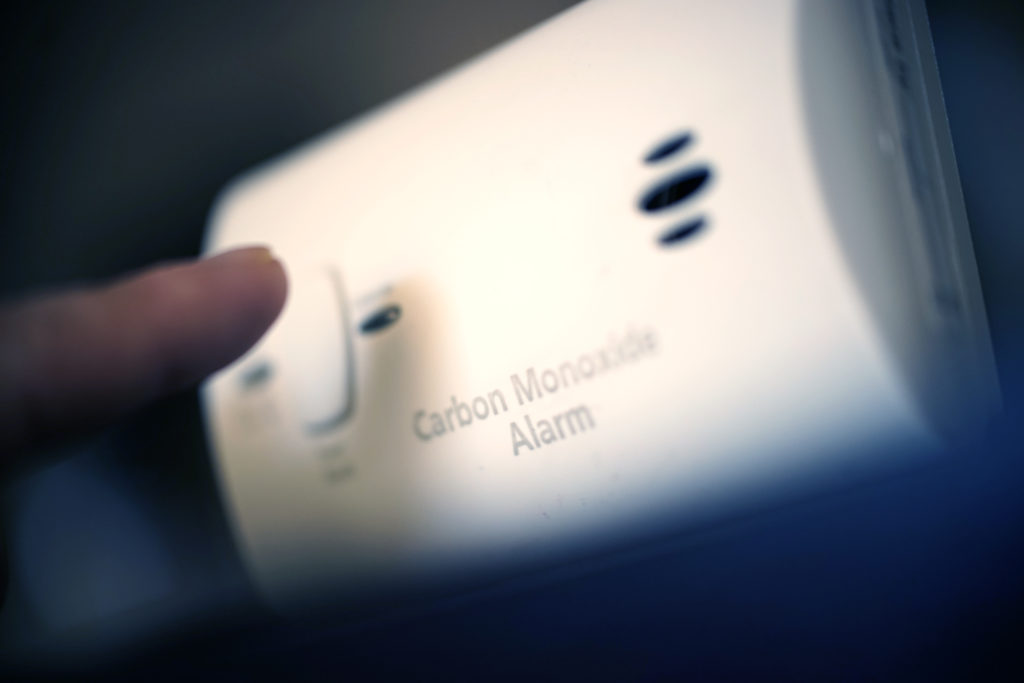 Carbon monoxide (CO) is an invisible, odorless, and tasteless gas, making it difficult to know when you’ve been exposed. Known as the silent killer, carbon monoxide poisoning is the most common fatal pollutant in many countries. As the weather turns cooler and we turn on our heating systems, it’s important to increase your awareness and take extra precautions.
Carbon monoxide (CO) is an invisible, odorless, and tasteless gas, making it difficult to know when you’ve been exposed. Known as the silent killer, carbon monoxide poisoning is the most common fatal pollutant in many countries. As the weather turns cooler and we turn on our heating systems, it’s important to increase your awareness and take extra precautions.
What Causes Carbon Monoxide Poisoning?
Burning fossil fuels produce carbon monoxide when oxygen levels are too low to create carbon dioxide. Gas, oil, wood, and coal burning appliances like boilers, central heating systems, water heaters, dryers, and generators are all sources of CO. Smoking cigarettes increases CO levels by 10-40 parts per million. Inhaling fumes from paint thinners and products containing methylene chloride, especially in poorly ventilated areas, causes carbon monoxide to metabolize in the bloodstream. Cars running in a closed garage can produce a deadly amount of carbon monoxide in only ten minutes! Some factory and industrial workers have exposure to carbon monoxide as well.
Carbon Monoxide Levels at Parts Per Million
The concentration of carbon monoxide is measured in parts per million (PPM), and effects from exposure vary.
- 0 PPM – Fresh air.
- 10-24 PPM — Possible long-term exposure risk.
- 35 PPM — OSHA standard for maximum exposure during an 8-hour work day.
- 100 PPM — Causes headaches after 1-2 hours.
- 200 PPM — Causes dizziness, nausea, fatigue.
- 400 PPM — Life-threatening after 3 hours of exposure.
- 800 PPM — Death within 2-3 hours of exposure.
- 1600 PPM — Death within 1-2 hours of exposure.
Symptoms
Inhaling CO turns your hemoglobin into carboxyhemoglobin, which prevents your blood from absorbing oxygen. Be aware of the symptoms of carbon monoxide poisoning in case you are in an area without a working alarm.
- Dizziness
- Headache
- Confusion
- Disorientation
- Nausea
- Blurred Vision
- Memory loss
- Loss of consciousness
Risks from CO Exposure
Anyone can be at risk of carbon monoxide poisoning. Prolonged exposure to CO can lead to seizures, coma, and death. Treatment requires administering 100 percent oxygen, and risk of death reduces as the oxygen brings the HbCO count down to less than 10 percent. Carbon monoxide poisoning is considered an anoxic brain injury, causing long-term neurological problems like memory loss, confusion, and poor coordination.
To prevent carbon monoxide poisoning, install at least one carbon monoxide detector on each level of your home. Check and replace your batteries twice a year and upgrade your alarm every five years. Schedule annual maintenance on any gas, oil, or coal appliances. Don’t use grills or generators indoors and keep your home and garage properly ventilated.
Contact us to learn more about the safety of your heating or ventilation equipment and to schedule your annual maintenance.
This entry was posted in Garage,Health Tips,Heating,Tips and tagged Carbon monoxide, Carbon monoxide poisoning, CO, Fossil fuels, Gas, Heating, HVAC, Poison
Subscribe to Our Blog
With RSS feeds, you don't have to visit our site everyday to keep up to date. Simply subscribe to our blog via RSS or Email and our posts will come to you!
Search Blog Posts
Categories
Archives
- April 2024 (1)
- February 2024 (1)
- January 2024 (1)
- February 2023 (1)
- January 2023 (1)
- December 2022 (1)
- November 2022 (1)
- October 2022 (1)
- September 2022 (1)
- August 2022 (1)
- July 2022 (1)
- June 2022 (1)
- May 2022 (1)
- April 2022 (1)
- March 2022 (1)
- February 2022 (2)
- December 2021 (1)
- November 2021 (1)
- October 2021 (1)
- September 2021 (1)
- August 2021 (1)
- July 2021 (1)
- June 2021 (1)
- May 2021 (1)
- April 2021 (1)
- March 2021 (2)
- January 2021 (1)
- December 2020 (1)
- November 2020 (1)
- October 2020 (1)
- September 2020 (1)
- August 2020 (1)
- July 2020 (1)
- June 2020 (1)
- May 2020 (1)
- April 2020 (1)
- March 2020 (1)
- February 2020 (2)
- November 2019 (1)
- August 2019 (2)
- June 2019 (1)
- May 2019 (1)
- April 2019 (1)
- March 2019 (1)
- February 2019 (1)
- January 2019 (1)
- December 2018 (1)
- November 2018 (1)
- October 2018 (1)
- September 2018 (1)
- August 2018 (2)
- July 2018 (1)
- May 2018 (1)
- April 2018 (1)
- March 2018 (1)
- February 2018 (1)
- January 2018 (1)
- December 2017 (3)
- November 2017 (2)
- October 2017 (2)
- September 2017 (2)
- August 2017 (1)
- July 2017 (2)
- June 2017 (3)
- May 2017 (2)
- January 2017 (4)
- November 2016 (1)
- September 2016 (3)
- July 2016 (2)
- June 2016 (2)
- May 2016 (4)
- April 2016 (1)
- March 2016 (2)
- February 2016 (2)
- January 2016 (1)
- August 2015 (1)
- July 2015 (1)
- June 2015 (3)
- May 2015 (1)
- July 2014 (2)
- June 2014 (1)
- April 2014 (1)
- March 2014 (1)
- February 2014 (2)
- October 2013 (1)
- May 2013 (1)
- March 2013 (1)
- February 2013 (1)
- August 2012 (1)
- July 2012 (2)
- June 2012 (2)
- May 2012 (2)
- March 2012 (1)
- February 2012 (1)
- December 2011 (1)
- November 2011 (1)
- October 2011 (1)
- September 2011 (1)
- August 2011 (1)
- June 2011 (1)
- May 2011 (1)
 Subscribe
Subscribe Subscribe
Subscribe